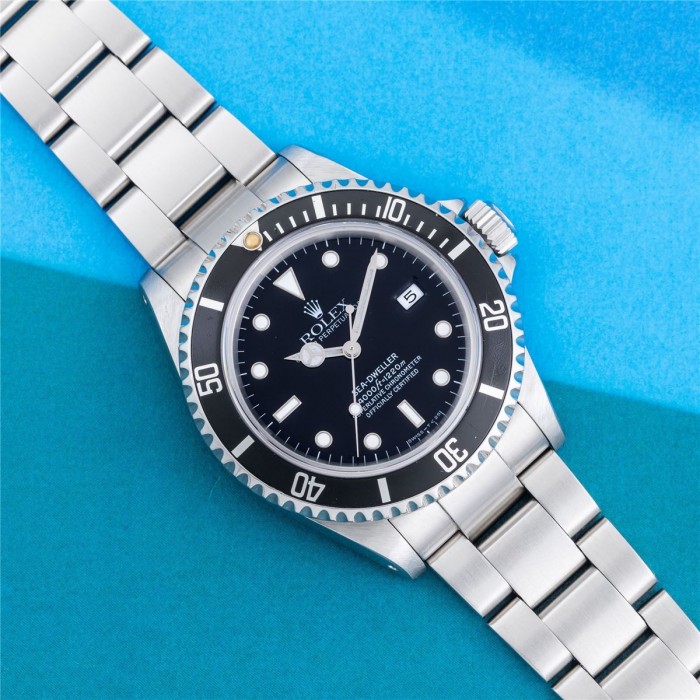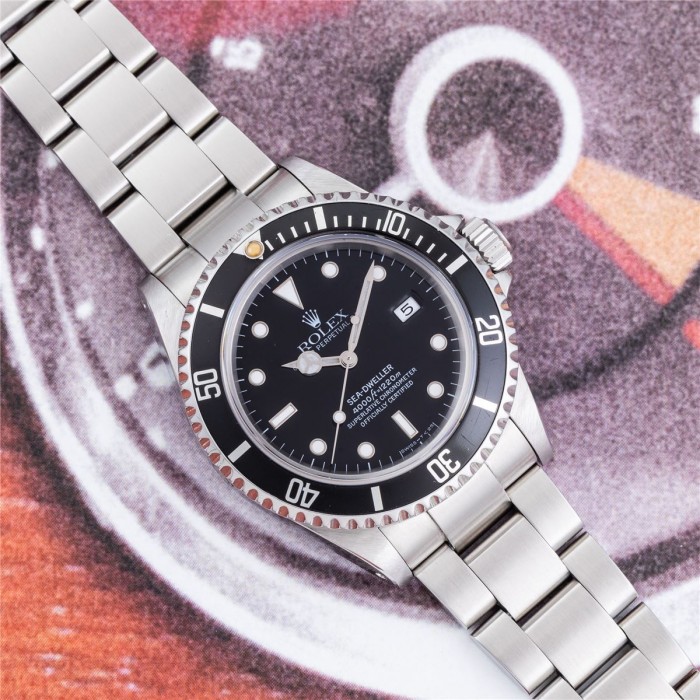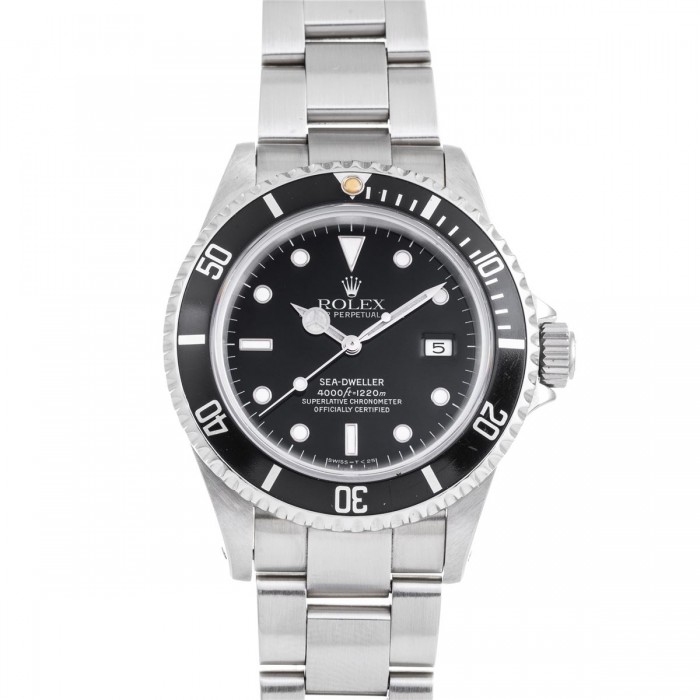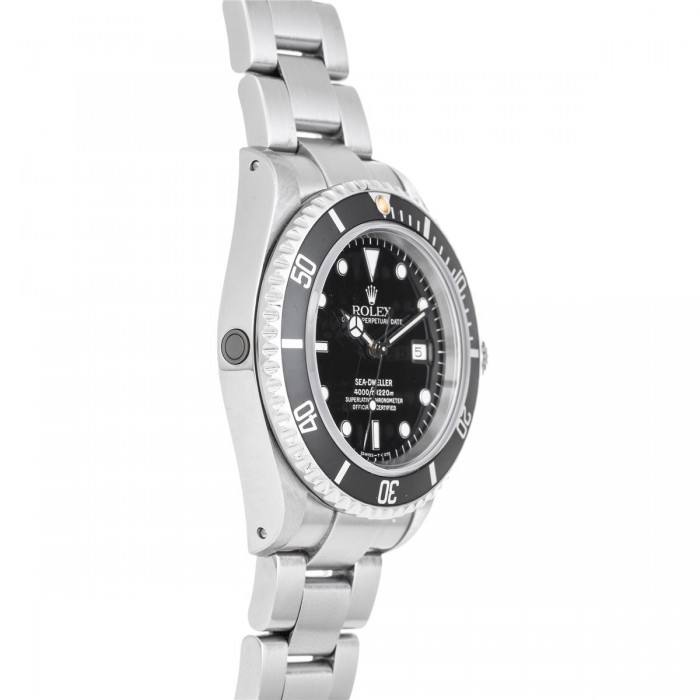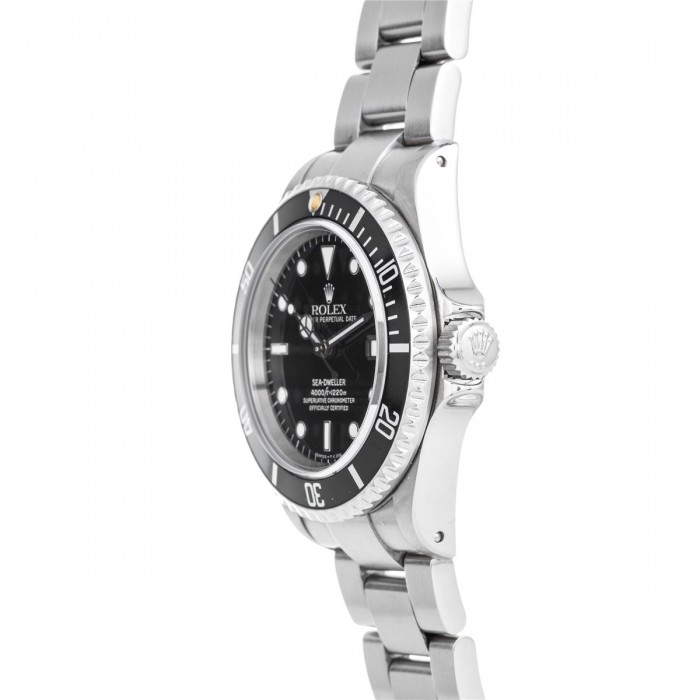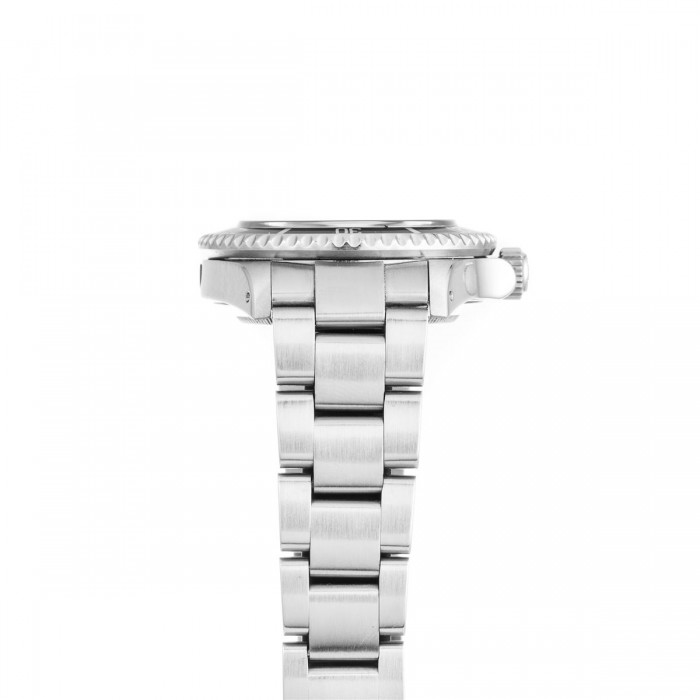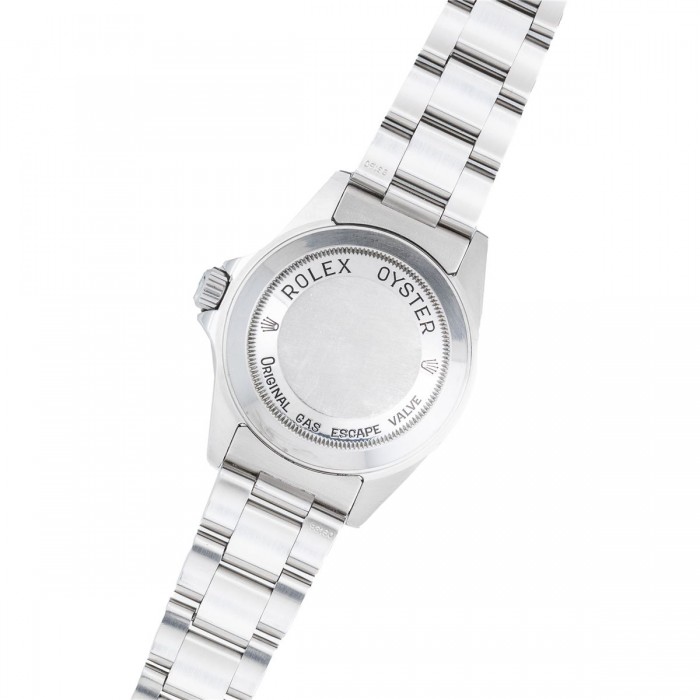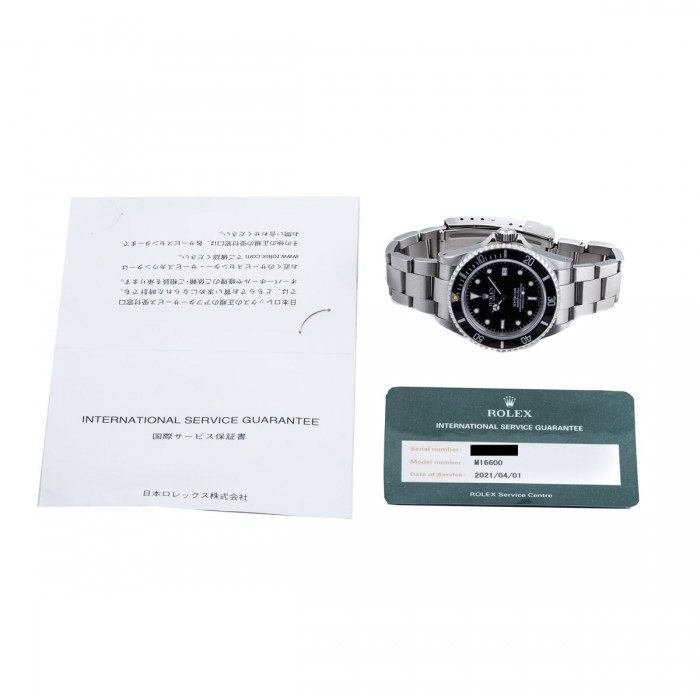Why We Love It
In 1978, the original Sea-Dweller (Reference 1665) was replaced by the Reference 16600. This new model boasted an even greater depth rating: an impressive 4000 feet (or 1220 meters). This was possible, in part, due to a larger Helium Escape Valve.
Visually, the 16600 stands apart from its predecessor with a glossy dial featuring applied luminous markers. The internals were also upgraded with the Calibre 3035 movement. Rugged, dependable, and beautiful the Reference 16600 is the last 'Dweller with classic Oyster dimensions.
This particular example has a T-serial and dates to circa 1996. It features an outstanding professionally refurbished 'holey' lug case with a helium escape valve, a rich glossy black Tritium dial and matching handset, and a matching Oyster bracelet with solid ends.
This is a rugged and beautiful watch from the last era of classically proportioned Rolex sports watches.
The Sea-Dweller Story
In many ways the development of the Rolex Sea-Dweller mirrors the technological advances that occurred during the 1960s and 1970s.
When the Sea-Dweller was introduced in 1967, NASA had launched over fourteen manned space missions and was just two years from putting a man on the Moon. Yet deep sea explorers (in many ways the astronauts of the deep) had only descended to the Marianas Trench once, in 1960.
But the divers of COMEX (for whom the Sea-Dweller was originallt designed) pushed the envelope, operating at depths that had never been possible before the introduction of commercial saturation diving in 1965.
At the time, the divers at COMEX were already using watches by Rolex, specifically the Submariner Reference 5513. However, since the divers of COMEX employed a new diving technique called saturation diving (in which the divers used a mix of hydrogen, helium and oxygen) the Reference 5513 was poorly designed for the purpose. When not working, the divers would rest in a pressurized chamber, breathing helium-infused air and allowing the built-up helium to leave their bodies.
Since saturation diving decreases a diver's decompression interval, the helium molecules left their bodies faster than they left their watches, causing a build-up of pressure that would blow the crystals off their watches. COMEX approached the Manufacture with this problem, and Rolex presented a solution: install a titanium Helium Escape Valve on the case at 9:00, which would allow the helium molecules to escape the watch faster.
A waterproof O-Ring secured a spring-loaded piston to the outside of the case, which pressed against the O-Ring when the watch was exposed to increased water pressure. Rolex gave COMEX a few of these special prototype 5513 Submariners with Helium Escape Valves, and the problem was solved. Later, in 1967, when COMEX requested a hundred more, Rolex issued a new Reference number, 5514, and placed the COMEX logo on the dial.
These Reference 5514 Submariners proved such a success that Rolex decided to release them to the public in a brand-new Reference: 1665, the Sea-Dweller. This first Reference of Sea-Dweller was equipped with the Calibre 1575 movement and a thicker crystal. Now recreational divers could buy a watch capable of descending to the punishing depth of 2000 feet (or 610 meters) at which the COMEX professionals worked.
The Sea-Dweller has continued to evolve, with each generation becoming a more capable and robust tool, in keeping with its original mandate. Today, the Sea-Dweller is a metric by which every other professional grade diving watch is measured – and while very few of them will ever be subjected to the pressures they are capable of withstanding, they prove the old adage.
Anything worth doing is worth overdoing!

No questions about this product, be the first and ask your question.



